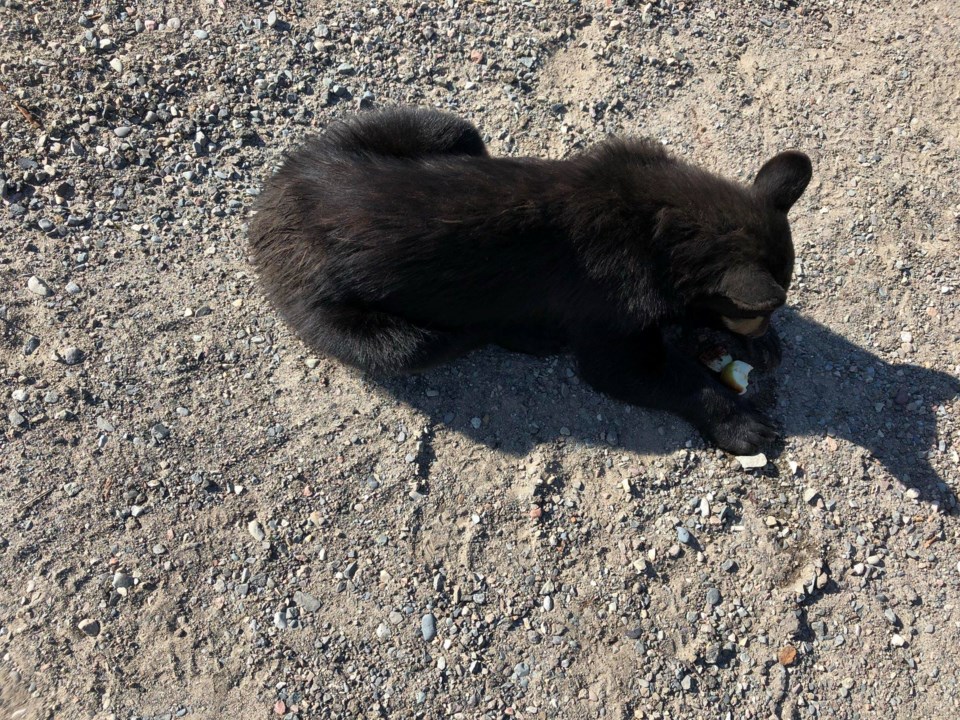The public is concerned and some people are outraged after Greater Sudbury Police euthanized an injured bear cub on Skead Road on July 19.
Comments on social media ranged from support for the constable who shot actually shot the bear to some strong criticism about how police handled the situation.
One person who doesn’t doubt police response is Rod Jouppi, the president of Wild At Heart wildlife refuge in Lively. Jouppi explained his position in the review police promised last week following the shooting.
The head of the Lively wildlife refuge said police made the “best choice in a bad situation” when they euthanized the young bear on Skead Road on July 19. While Wild At Heart does care for wildlife, it doesn’t transport or respond to injured wildlife calls because, as a non-profit, there just isn’t the funding for that.
Police are often called in, Jouppi said, but officers lack the training, proper equipment or proper vehicles to safely handle and transport wildlife.
“Police services are often caught in a bad situation,” he wrote. “Officers are expected to respond to an unsafe situation with people and traffic involved, and in this case an injured unpredictable bear. In relation to this matter, I believe the officer’s decision and actions were the best choice in a bad situation.”
In the statement published to Facebook, police said they understand the “heartbreak” the euthanization of the bear caused some people. Echoing Jouppi’s statement, police also said officers don’t have the equipment or training to handle or transport wild animals.
From the information gathered for the review, police said based on the bear’s condition when they arrived, euthanization was the best — though the most difficult and troubling — course of action.
“Once on scene, the officers approached on foot and could see the motionless animal on the side of the road. As the Officers got closer, the bear briefly lifted its head, but could not move beyond that,” the review reads. “The bear was in obvious distress and had been suffering for over 40 minutes. The bear’s condition had deteriorated to the point where it was unable to avoid human interaction. The officers could see from the bear’s condition that dispatching the animal would swiftly end its suffering.”
Officers do receive training in how to properly “dispatch” (the term police use for shooting an injured animal) an animal. Witness said it seemed to take police multiple shots to end the bear’s life, which had some people questioning the training and the skill of the officers involved.
“(Officers) are trained on shot placement that is most likely to end an animal’s life. The first shot placement to the head was likely fatal, however, involuntary motor functions continued,” the review states. “Subsequently, the officer fired additional shots in an attempt to stop the motion.
Calling the officer’s decision “justified,” the review states the officer’s decision following police protocol and the decision was made compassionately, with the intent of ending the animal’s suffering.
And while some witnesses questioned the officer’s training, Jouppi said head shots are not always immediately fatal.
“The officer must make a decision in the field without backup. Shooting a bear in the head is a preferred method of euthanasia according to the American Veterinary Medical Association, the world’s foremost authority in veterinary medicine,” Jouppi said. “These shots may not result in sudden death because of field issues, including vehicle traffic and the presence people in the background. The process of dying may not be instantaneous.”
The review did reveal something else for which police apologized. Although police originally said the Ministry of Natural Resources and Forestry (MNRF) was contacted before the bear was shot, the review revealed that was not the case. As well, police also learned they were mistaken in believing MNRF would not respond to injured animal calls.
“We apologize for the previous statement,” police said. “The MNRF has indicated that they do have the ability to respond to injured animal calls and in the future all injured wildlife calls will be directed/redirected to the MNRF for response, and our police training will include this component.”
While the public appears to expect emergency first aid by supplied for injured wildlife, police said “no government agency is mandated, funded or equipped to provide emergency first aid to wildlife.
“Through the Greater Sudbury Bear Committee, which consists of members from the Ministry of Natural Resources and Forestry, the City of Greater Sudbury and the Greater Sudbury Police Service, we will continue to explore alternative responses to injured wildlife through additional partnerships with wildlife agencies that are more appropriately suited to handle wildlife calls.”
You can read the full text of the police review below.
